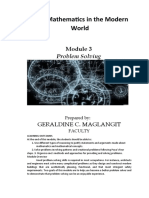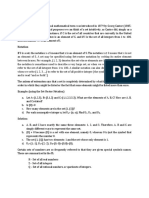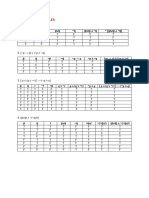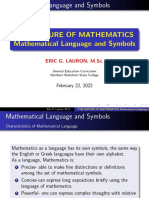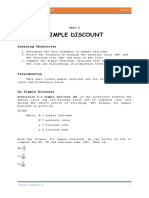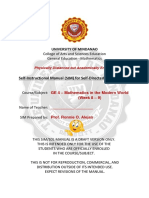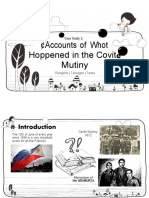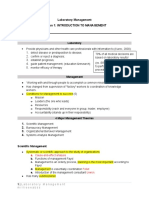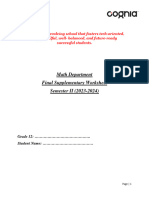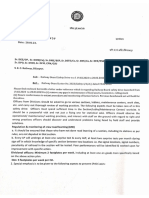0% found this document useful (0 votes)
694 views15 pagesPolya's Problem Solving Steps
George Polya was a mathematician who advocated a four step problem solving strategy: (1) understand the problem, (2) devise a plan, (3) carry out the plan, and (4) look back on the solution. He published several books outlining this approach, including How to Solve It. The document then provides examples of applying each step to sample problems, such as finding consecutive integers with a given sum or determining the number of routes between two points on a map. Various techniques are also discussed for different problem solving approaches, such as making lists, tables, diagrams, or simplifying the problem.
Uploaded by
Angelica Camille B. AbaoCopyright
© © All Rights Reserved
We take content rights seriously. If you suspect this is your content, claim it here.
Available Formats
Download as DOCX, PDF, TXT or read online on Scribd
0% found this document useful (0 votes)
694 views15 pagesPolya's Problem Solving Steps
George Polya was a mathematician who advocated a four step problem solving strategy: (1) understand the problem, (2) devise a plan, (3) carry out the plan, and (4) look back on the solution. He published several books outlining this approach, including How to Solve It. The document then provides examples of applying each step to sample problems, such as finding consecutive integers with a given sum or determining the number of routes between two points on a map. Various techniques are also discussed for different problem solving approaches, such as making lists, tables, diagrams, or simplifying the problem.
Uploaded by
Angelica Camille B. AbaoCopyright
© © All Rights Reserved
We take content rights seriously. If you suspect this is your content, claim it here.
Available Formats
Download as DOCX, PDF, TXT or read online on Scribd
/ 15


